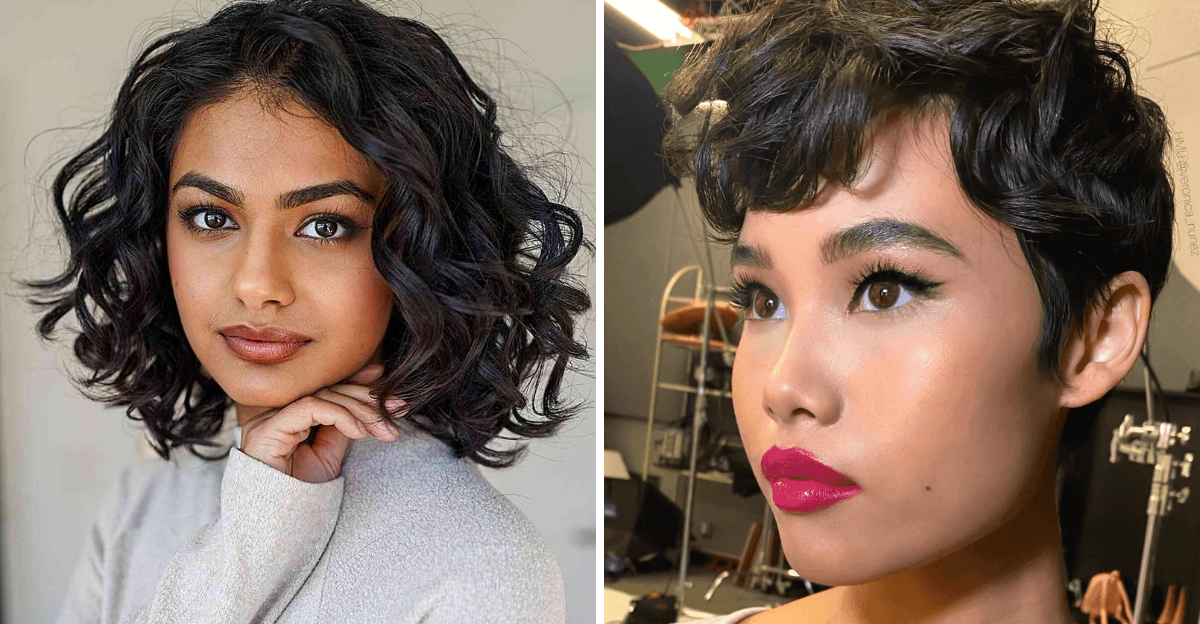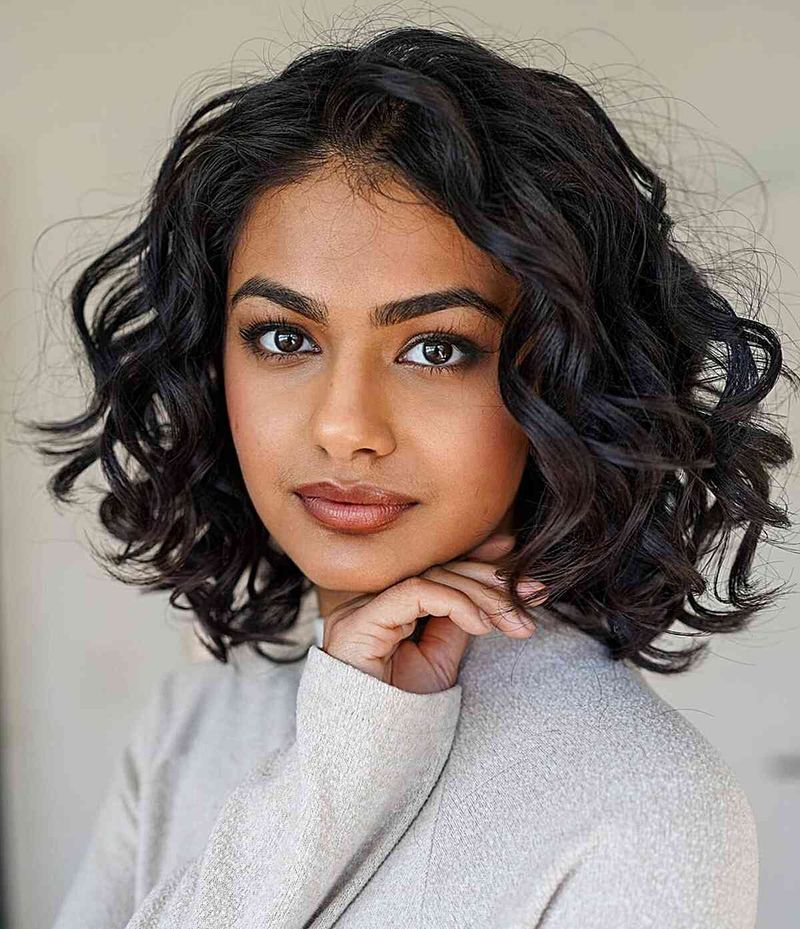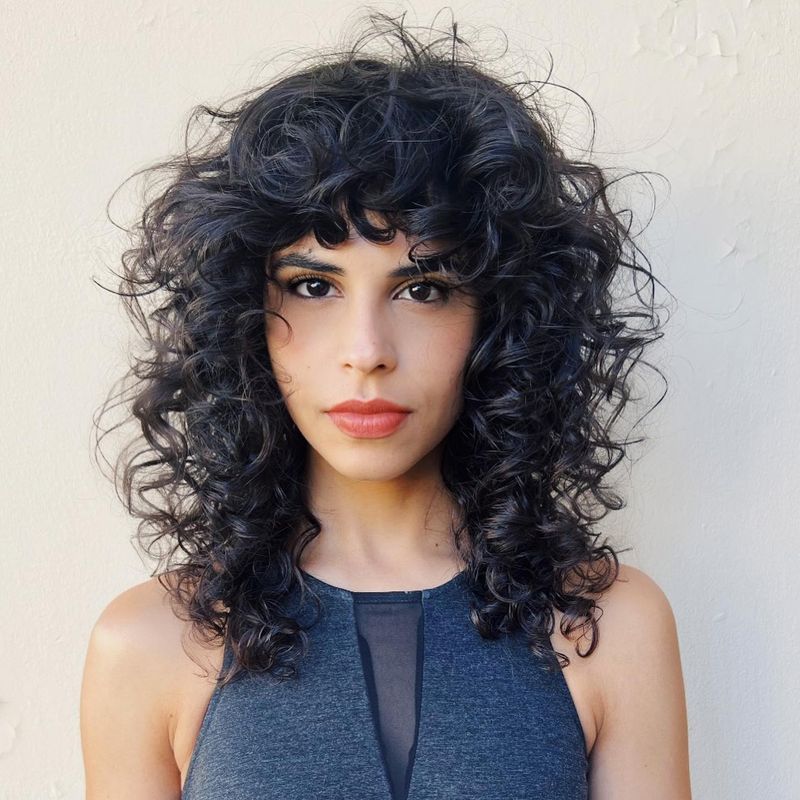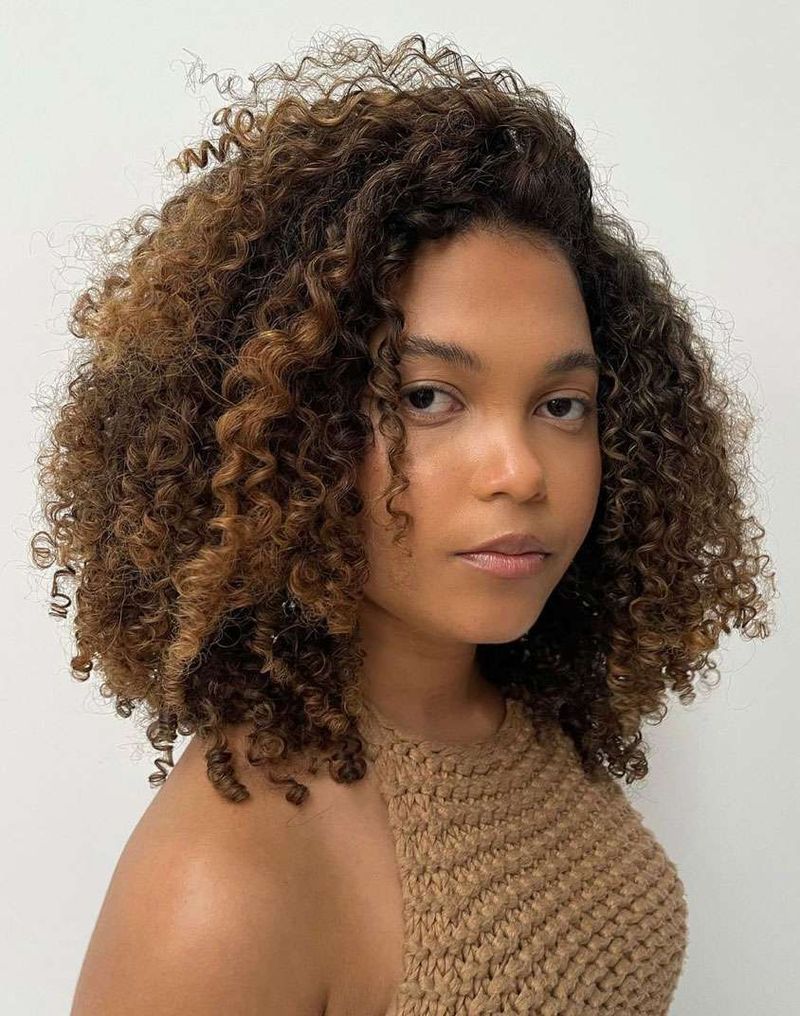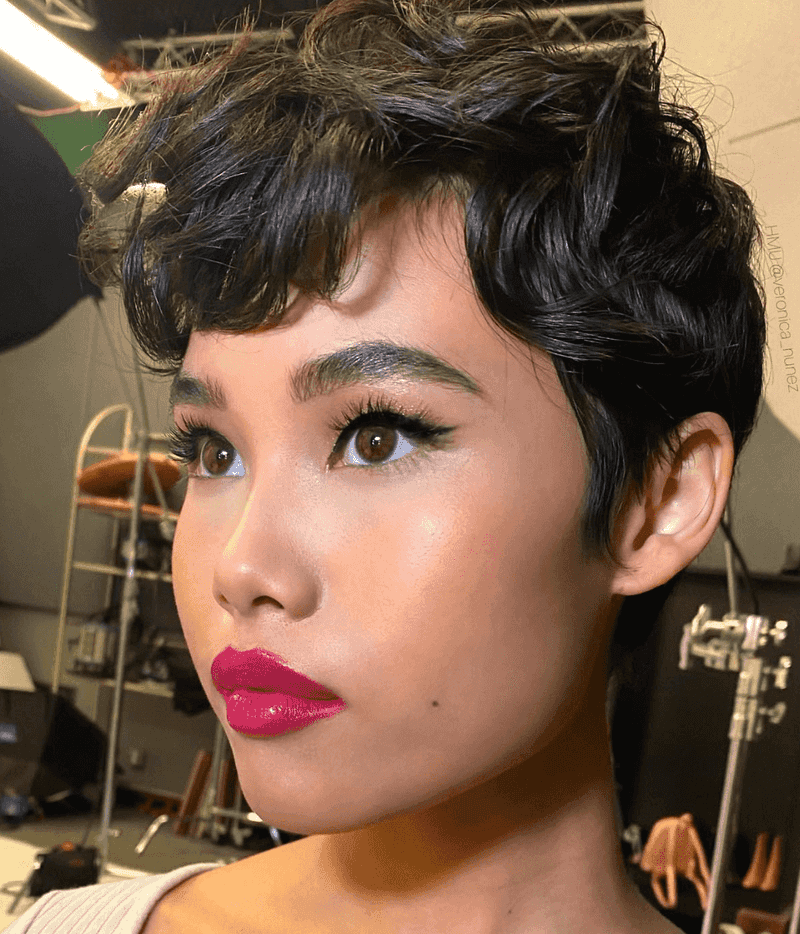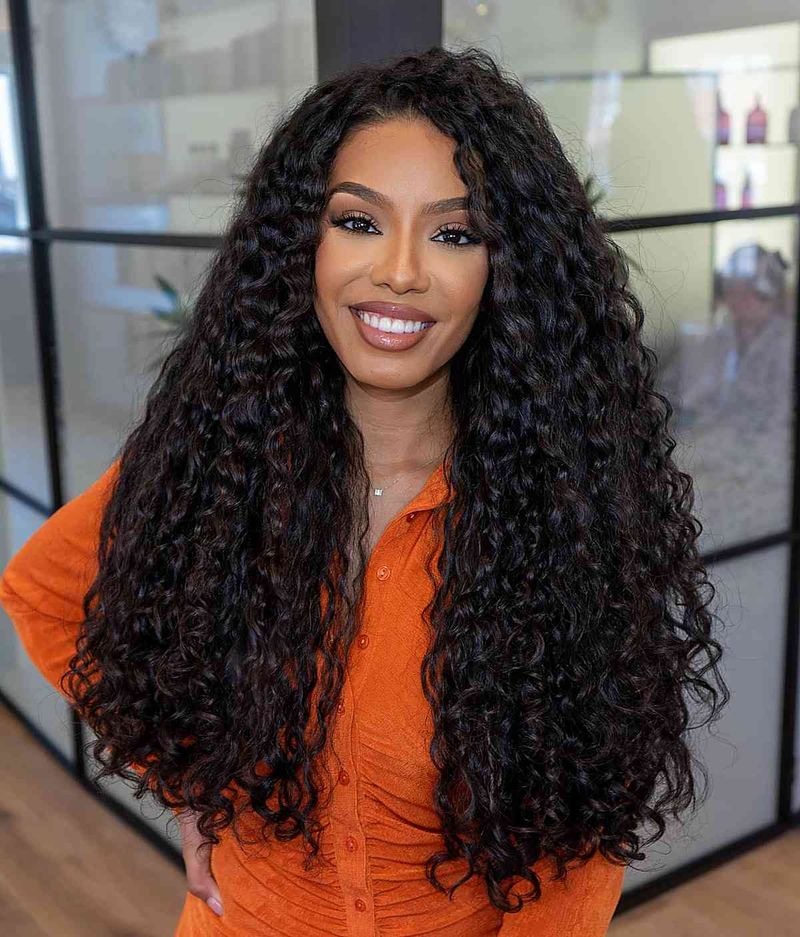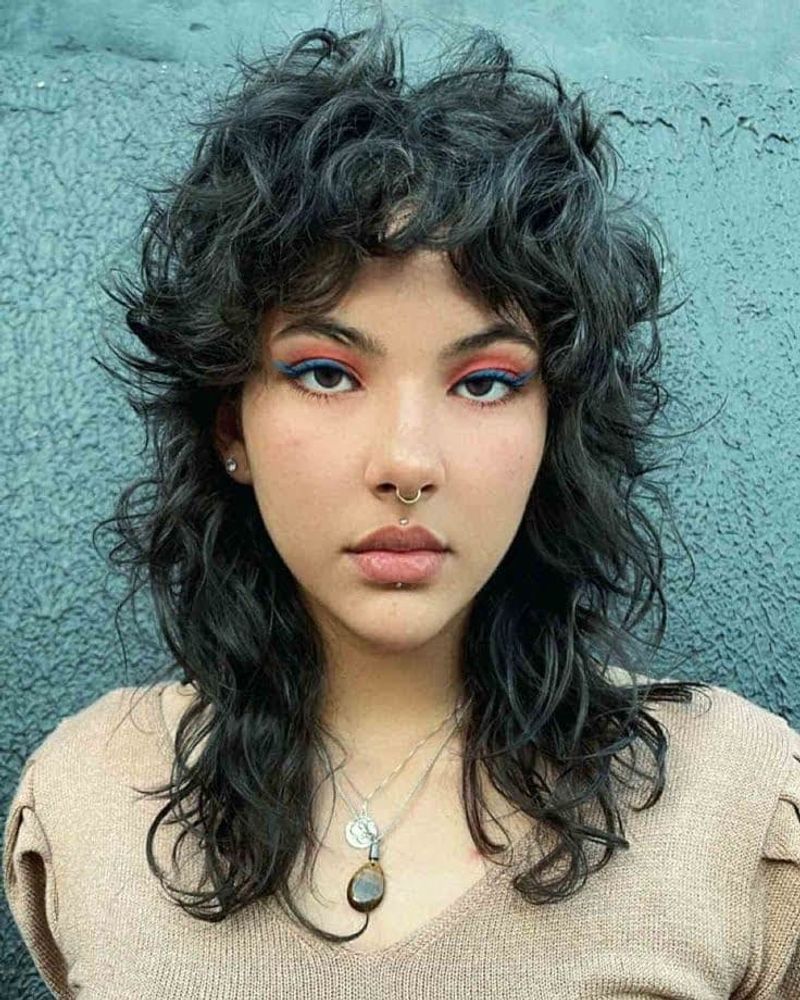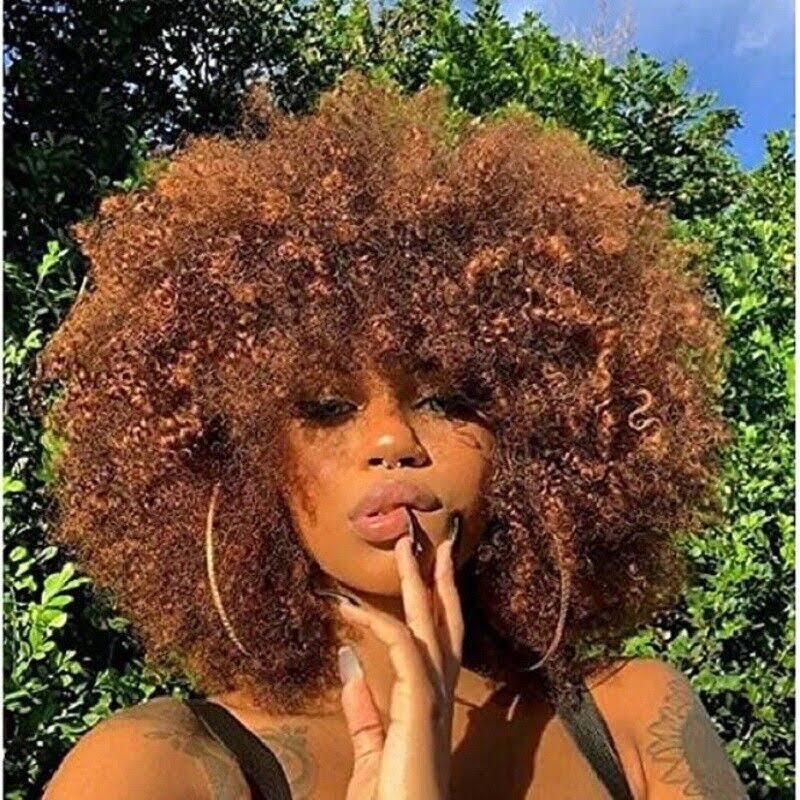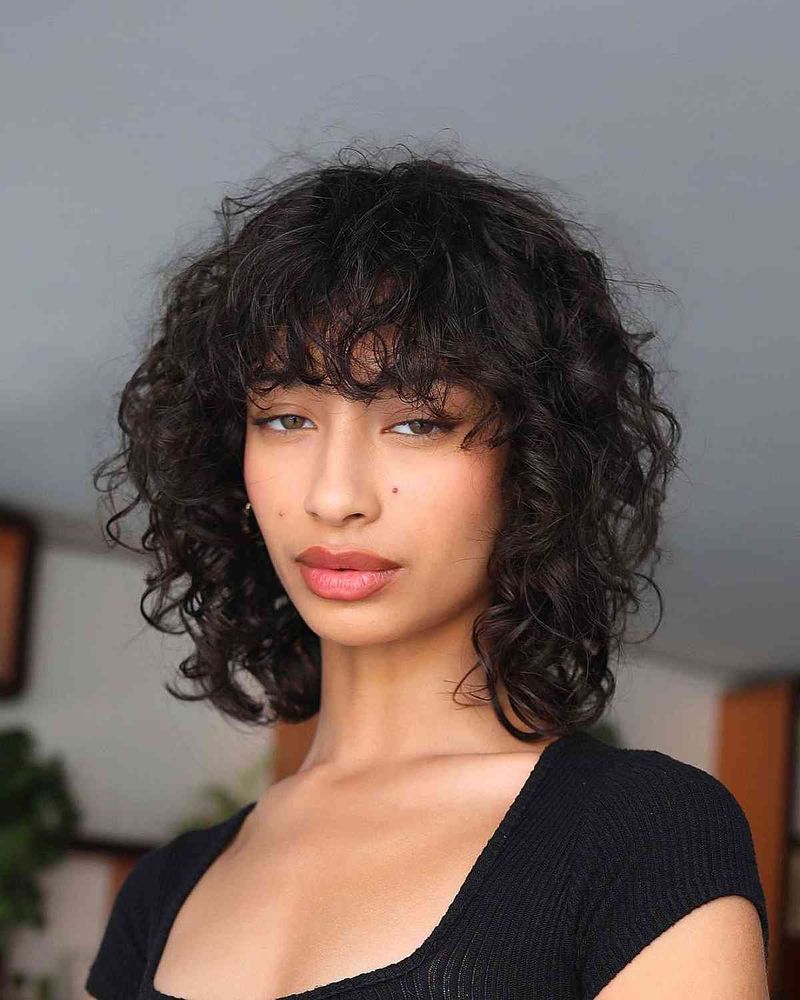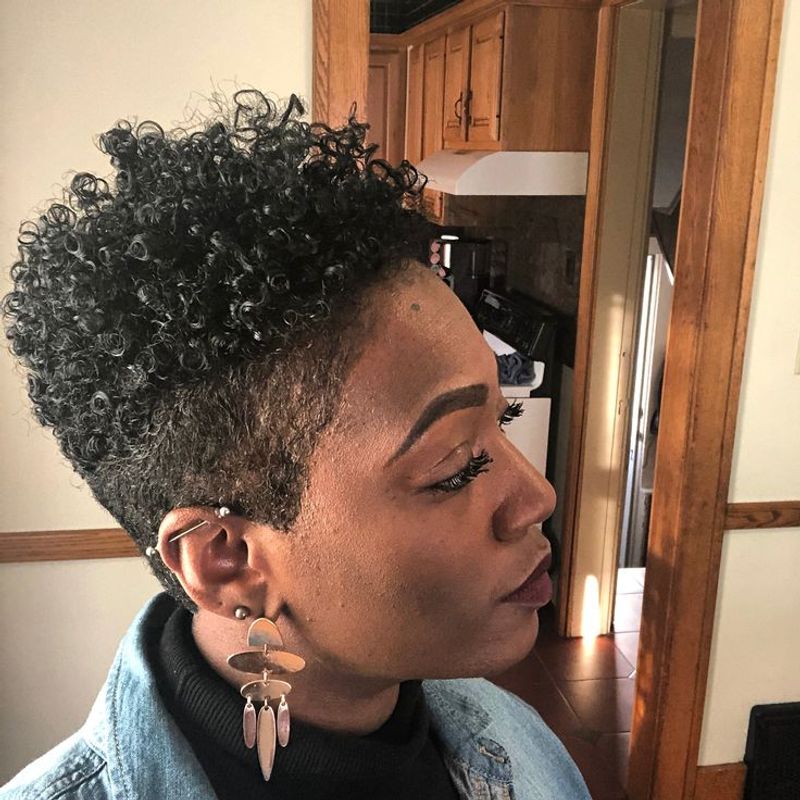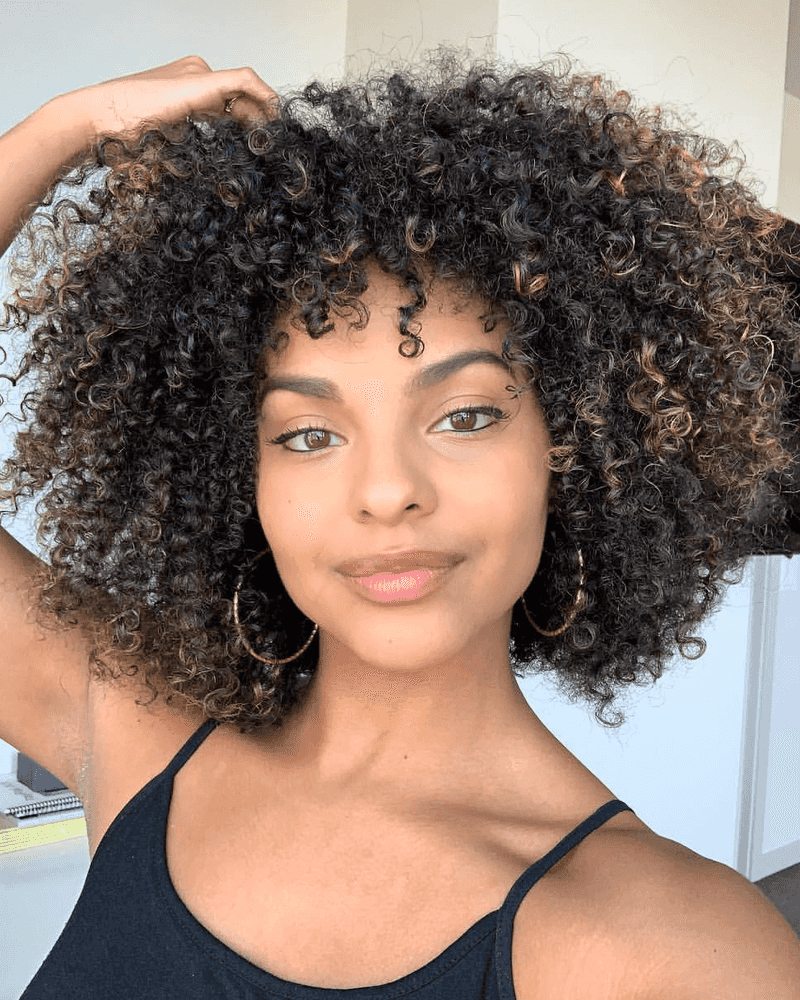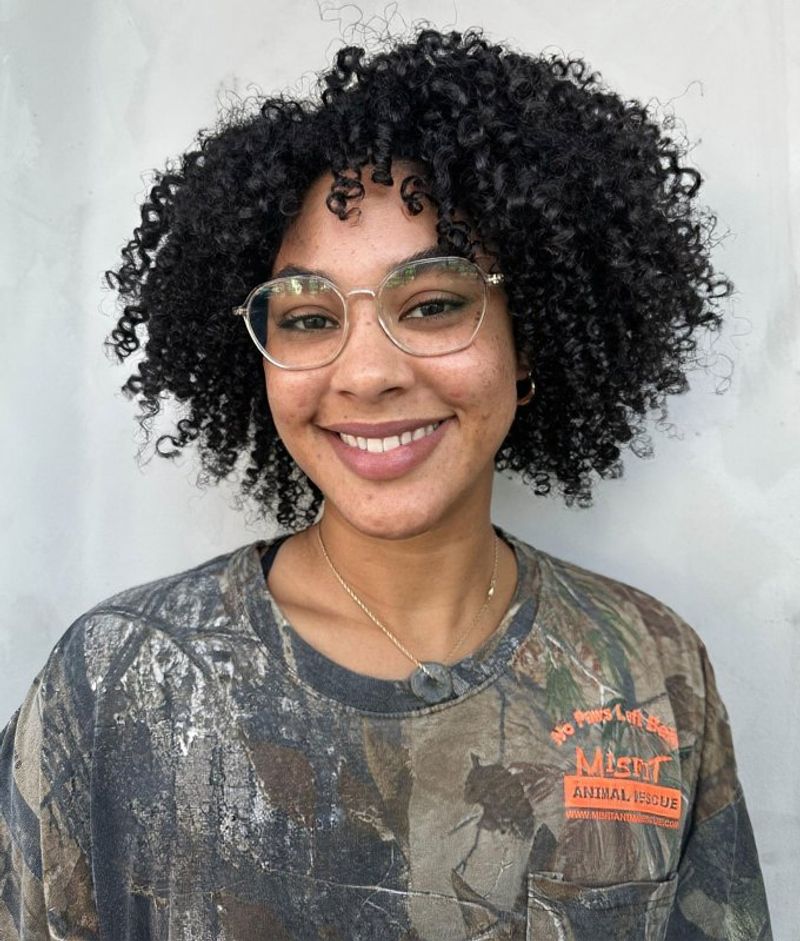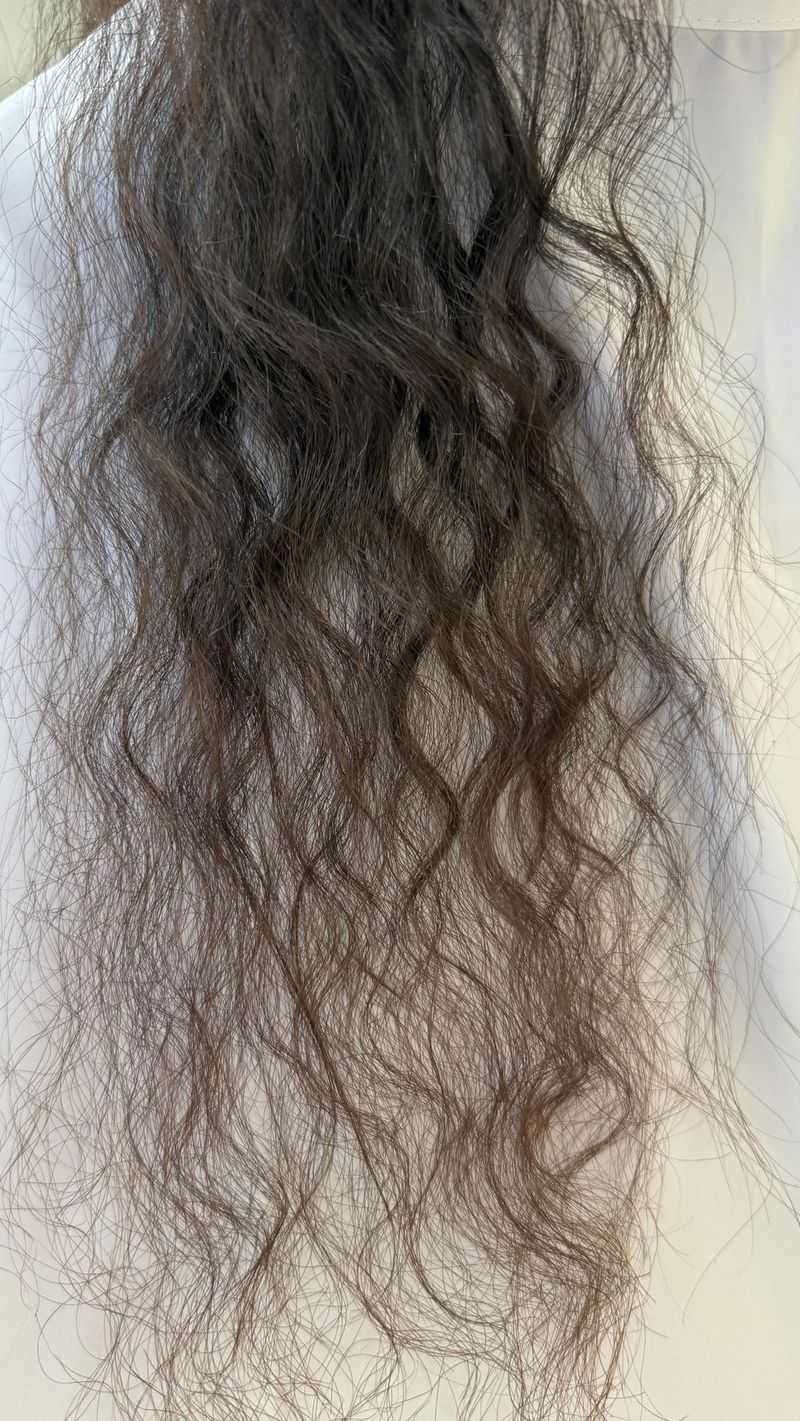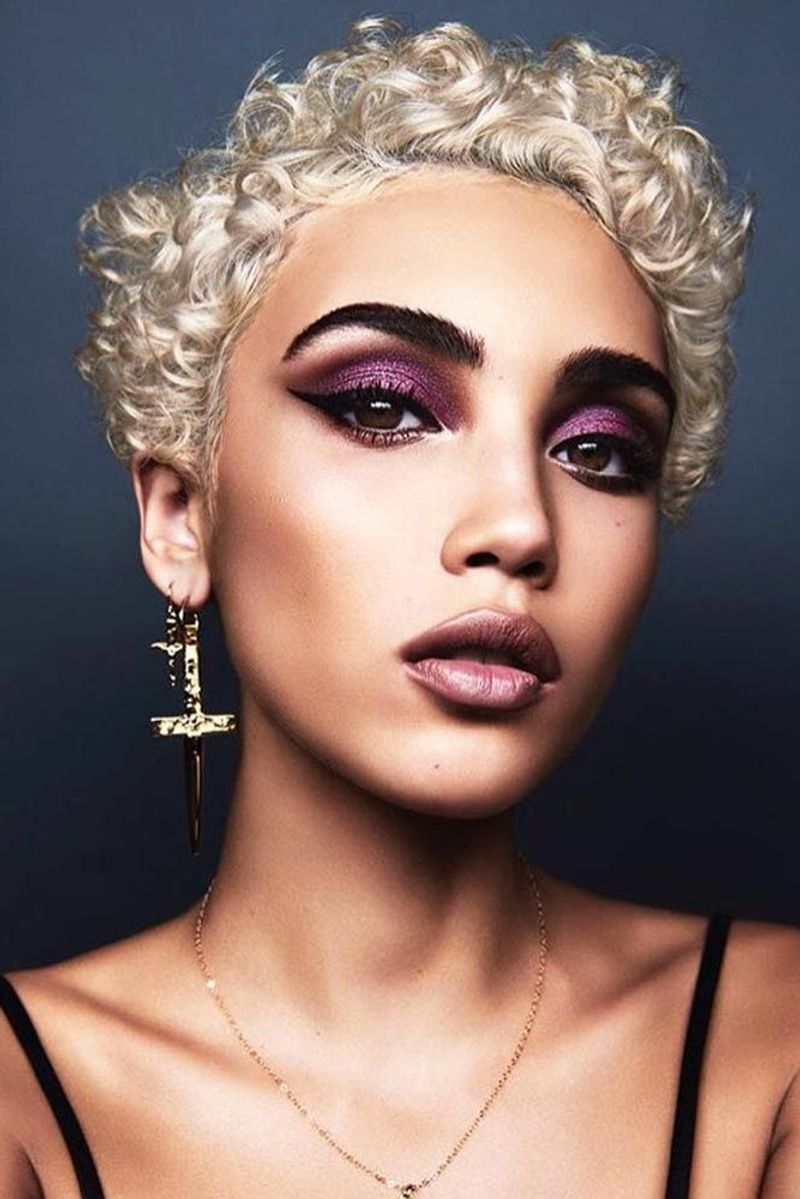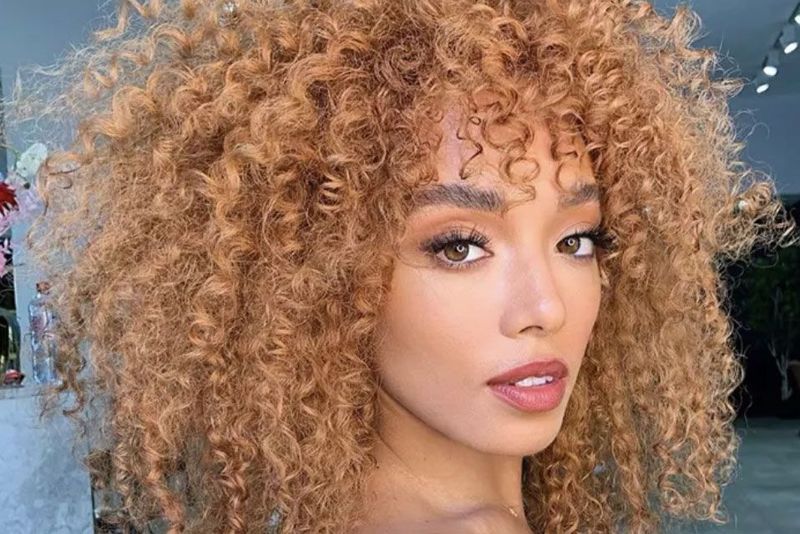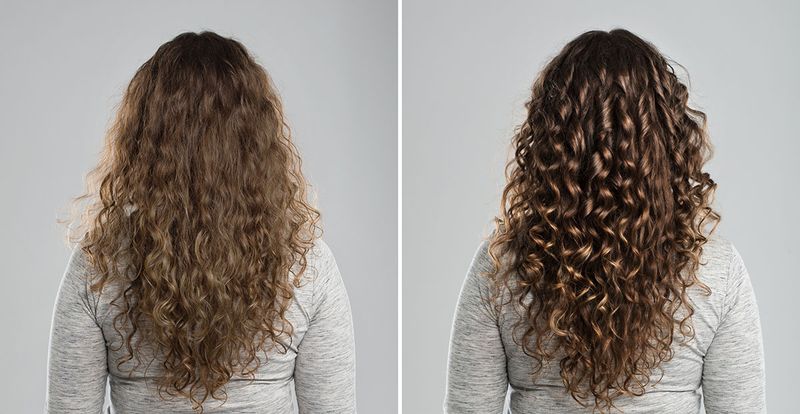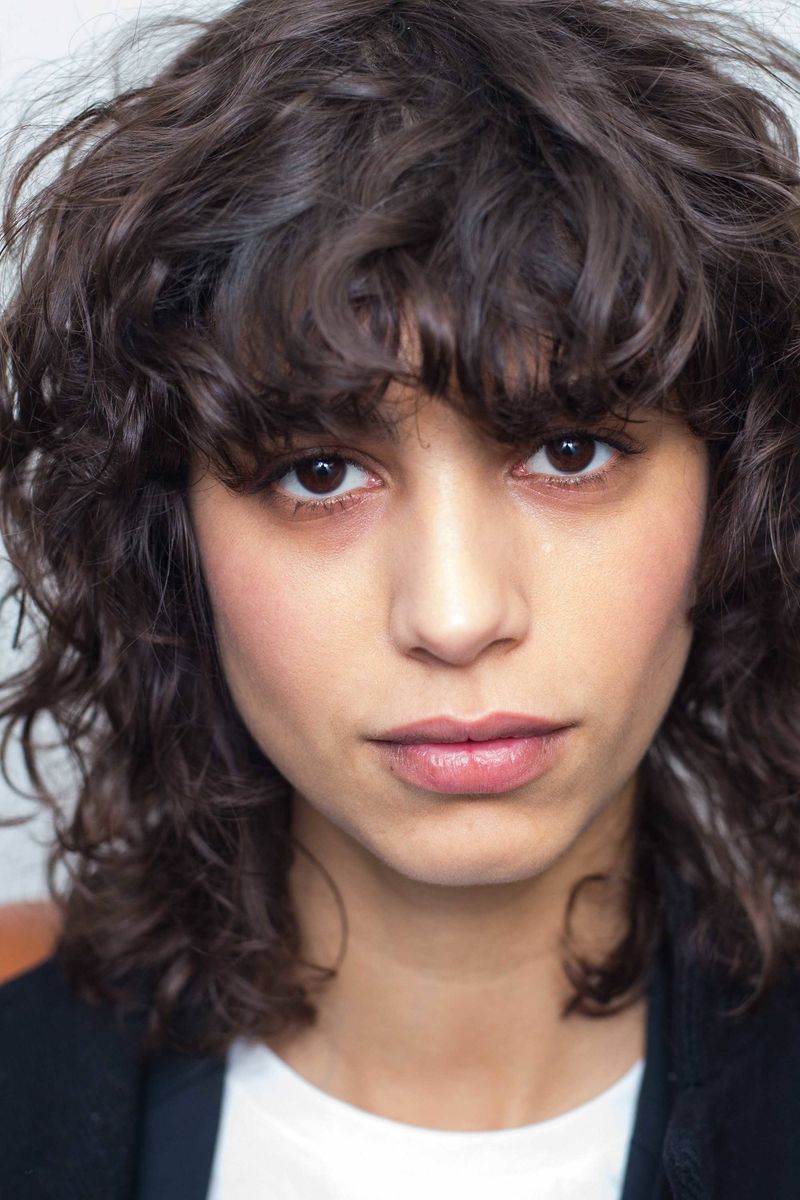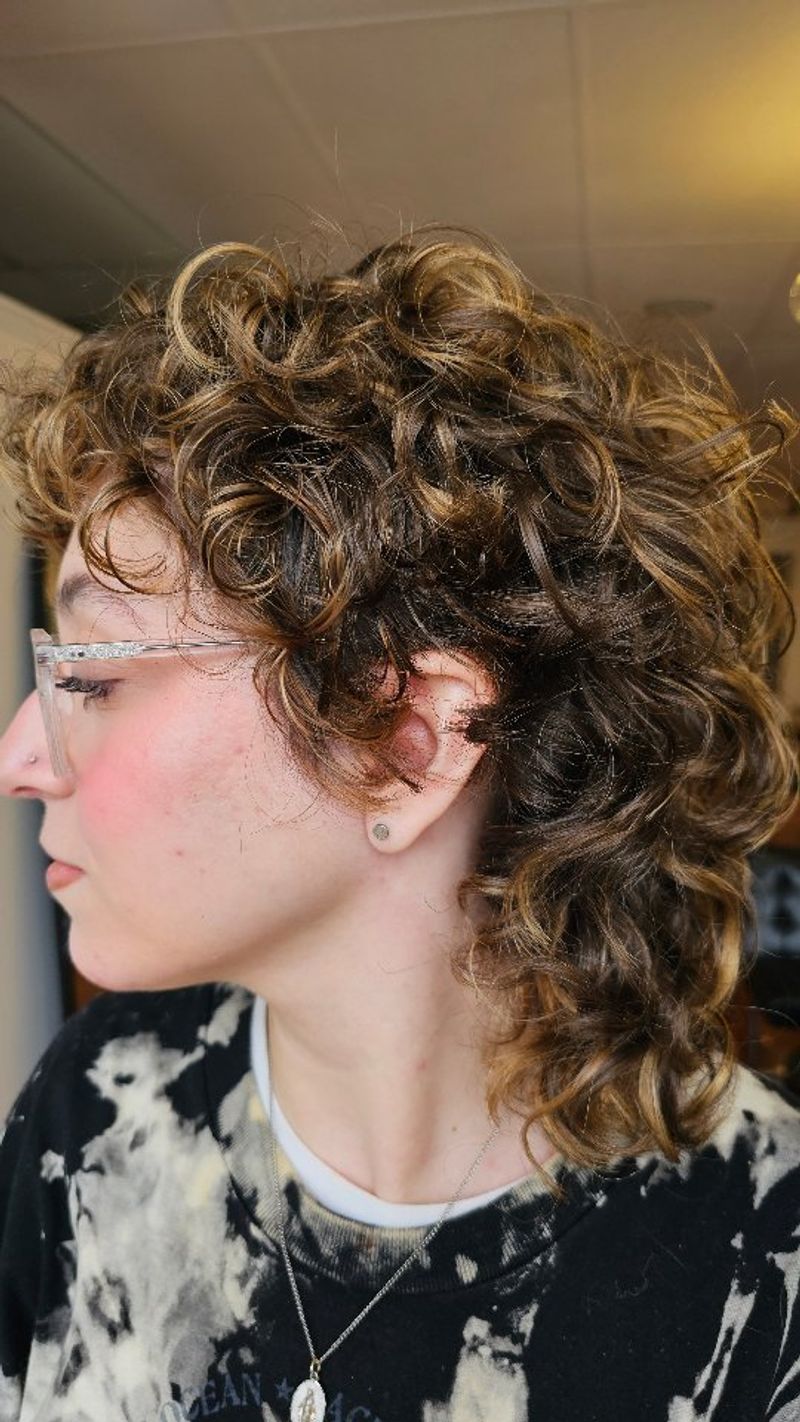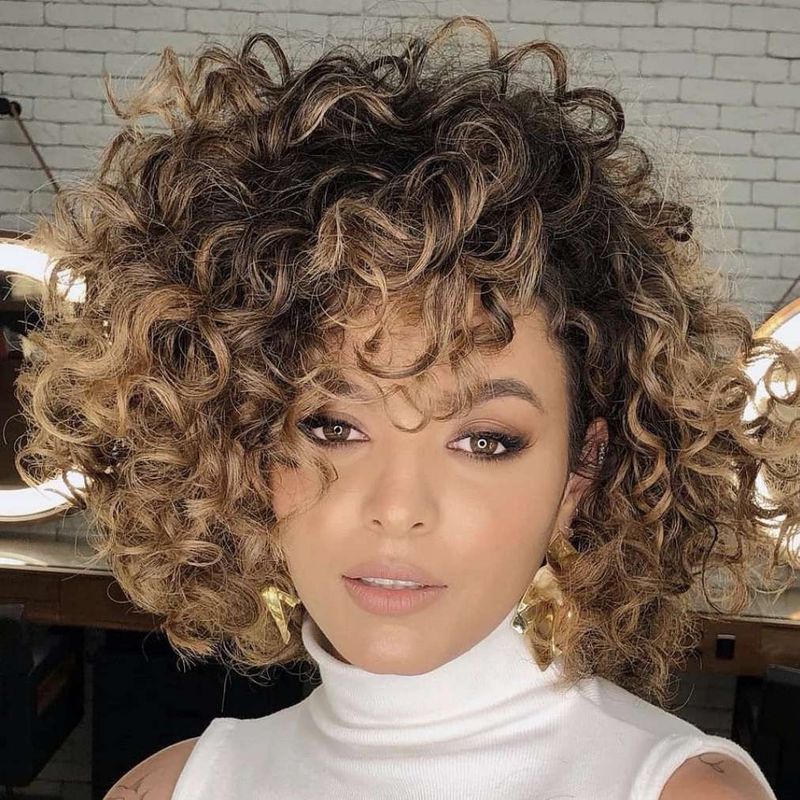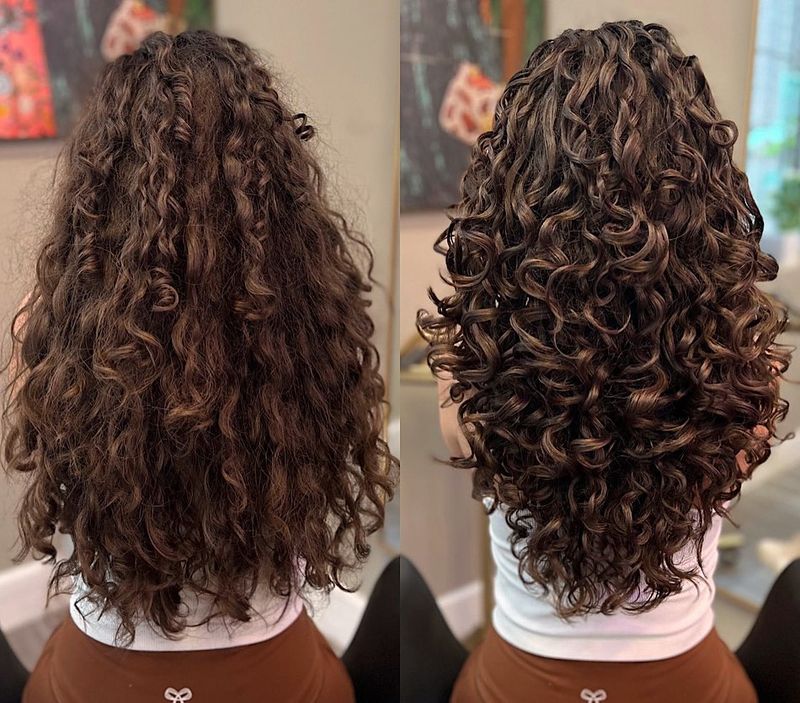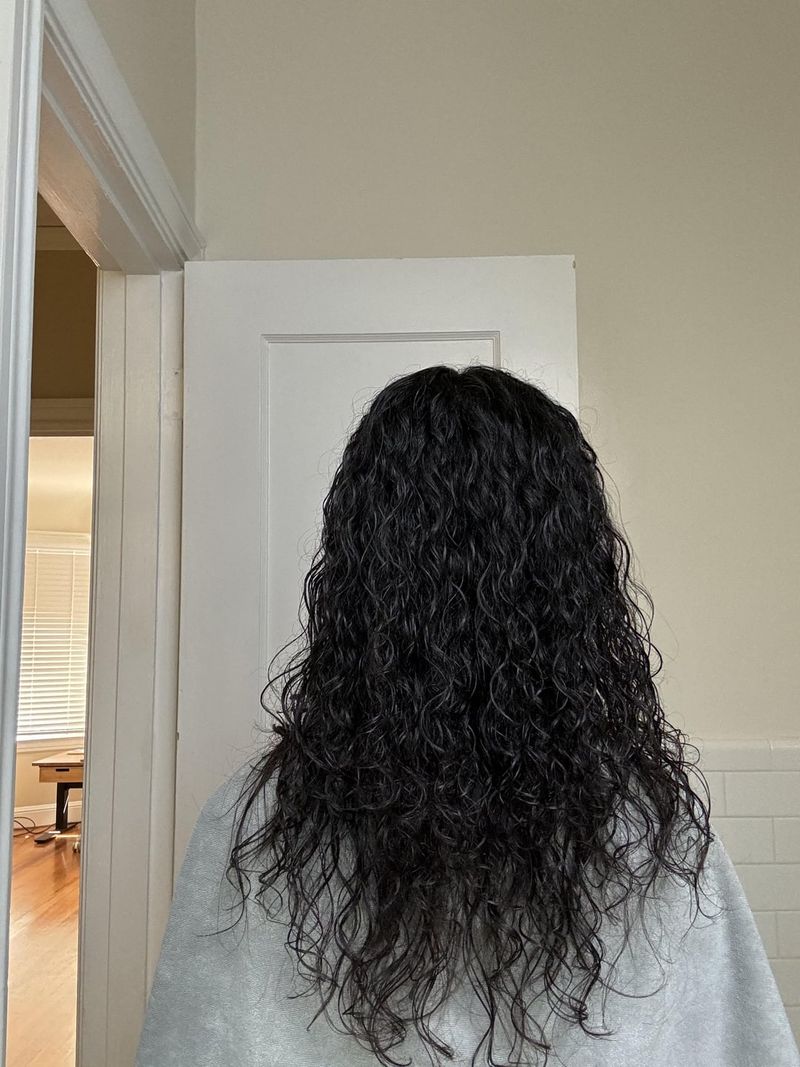Embracing your natural curls means finding a haircut that enhances—not fights—your beautiful texture. The right cut can define your curls, reduce frizz, and showcase your hair’s natural bounce.
The wrong one? Well, it can lead to triangle hair, endless frustration, and many tearful bathroom moments.
1. Bob com camadas
Bouncy and full of life, a bob em camadas gives curls room to spring into their natural shape. The layers remove weight while maintaining volume where you need it.
Related: -14 Empowering Pixie Styles for Women Over 40 Who Own Their Look
Perfect for face-framing without the dreaded triangle effect that happens with one-length cuts.
2. Pano encaracolado
Rock star vibes meet effortless style with the cabelo encaracolado. This cut features choppy layers throughout and usually includes curtain bangs that blend seamlessly with the rest of your curls. The intentionally messy look actually creates gorgeous definition and movement.
3. Camadas à altura dos ombros
The goldilocks of curly cuts—not too long, not too short. Shoulder-length layers distribute weight evenly throughout your curls, preventing the bottom from becoming heavier than the top. This versatile length works for nearly all curl types and face shapes.
4. Pixie encaracolado
Bold and beautiful, the curly pixie showcases your facial features while letting those curls do their thing up top. Longer pieces on the crown create height and movement. Contrary to popular belief, this short style often requires less maintenance than longer curly cuts!
5. Long Curly Layers
Mermaid hair dreams come true with strategically placed long layers. The key is removing bulk without sacrificing length, allowing curls to form their natural spiral pattern all the way down. Ask your stylist for layers that start below the chin for best results.
6. Curly Wolf Cut
Part mullet, part shag, all awesome—the wolf cut creates a wild yet controlled mane of curls. Heavy framing around the face cascades into longer layers at the back. This trendy cut works especially well for curly hair types that need serious weight removal to achieve bounce.
7. Afro arredondado
Celebration of texture in its purest form! A rounded afro cut enhances the natural volume and shape of tight coils and kinks. The key is finding a stylist who shapes the hair evenly all around, creating that perfect spherical silhouette that highlights your gorgeous texture.
8. Curly Lob with Bangs
Sophistication meets playfulness in this just-below-the-shoulders cut paired with curly bangs. The length hits that sweet spot where curls can still bounce freely without excessive weight. Curly bangs add a fun dimension that frames eyes and cheekbones beautifully.
9. Tapered Natural Cut
Shorter sides with length on top create a striking silhouette that celebrates natural texture. The gradual fade on the sides provides contrast with the fuller crown. This low-maintenance style works beautifully for tight coils and keeps the morning routine simple while looking intentional and polished.
10. Deva Cut
Specifically designed for curly hair, the Deva Cut is shaped dry to work with your unique curl pattern. Each curl is cut individually to maximize definition and minimize frizz. The result? A customized shape that honors how your curls naturally fall and cluster together.
11. Bob sem corte
Curls and straight lines rarely play well together. A blunt bob creates a heavy bottom edge that forces curls to expand outward instead of down. The result? The dreaded triangle shape that widens at the bottom and flattens at the crown—exactly the opposite of what most curly folks want.
12. Razor Cut Anything
Razors and curls are sworn enemies. Razor cutting shreds the hair shaft and creates frayed ends that lead to massive frizz and split ends in curly hair. Even when it looks good walking out of the salon, the damage reveals itself within days as your curls turn into a fuzzy mess.
13. Super Short Pixie
While curly pixies can be gorgeous, going too short removes the length needed for curls to actually form. Without enough hair length, tight curls can stick straight up or create uneven puffiness. Very short cuts also grow out awkwardly with curly hair, creating challenging in-between stages.
14. Heavy Bangs
Straight-across, thick bangs fight against curly hair’s natural tendency to spring up and out. Unless you’re committed to daily straightening, these bangs will shrink up much shorter than intended. They also require constant maintenance as humidity changes their length from hour to hour.
15. One-Length Long Hair
The weight of gravity pulls down on curls when all the hair is the same length. The result? Flat on top, slightly curly in the middle, and a triangular bell shape at the bottom. Without layers to remove weight, long curly hair loses its bounce and definition.
16. Undercut on Fine Curls
While undercuts work for some curl types, they’re disastrous for fine curly hair. Removing substantial hair underneath takes away the density needed for curls to support each other. The remaining hair often looks sparse and limp, with curls falling flat without their supporting cast.
17. Mullet on Curly Hair
Business in front, party in the back? More like chaos all around with curly hair. The dramatic length difference between short front and long back sections creates an unbalanced shape with curls. Different lengths mean different curl patterns, resulting in an unintentionally messy look.
18. Choppy Disconnected Layers
Curly hair already has natural separation between curls. Adding choppy, disconnected layers creates gaps and holes in the overall shape that make curls look random and messy. These harsh transitions between lengths disrupt the natural flow of curl groupings.
19. V-Shaped Cut
The V-shape cut might look dramatic on straight hair, but it creates a bizarre growth pattern with curls. The center back ends up much longer than the sides, creating an odd Christmas tree effect. Curls need balanced weight distribution, not concentrated length in one area.
20. Super Thinned Out Ends
Over-thinning the ends of curly hair creates stringy, separated curls that lose their bounce and definition. Thinning shears can shred curl patterns and create frizz at the ends. Healthy curls need some weight at the ends to form proper spiral or coil shapes.

